Interventions for occluded central venous catheters

To identify the interventions used to treat thrombotic events in long-term central venous catheters in pediatric patients with cancer” da Costa et al (2019). Abstract: CONTEXT: Thrombotic occlusion is 1 of the most frequent complications in catheters implanted in children. OBJECTIVE: To identify the interventions used to treat thrombotic events in long-term central venous catheters […]
Complications of patients dialyzed with permanent central catheters
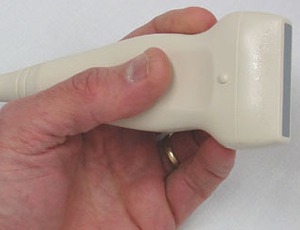
Although arteriovenous (A-V) fistula is a preferred form of vascular access, for various reasons, permanent catheters are implanted in many patients” Szarnecka-Sojda et al (2019). Abstract: Background and Objectives: An increase in the incidence of end-stage renal disease (ESRD) is associated with the need for a wider use of vascular access. Although arteriovenous (A-V) fistula […]
Point-of-care ultrasound in the neonatal ICU

Experience with POCUS in the NICU is growing. Current evidence supports the use of POCUS for a number of diagnostic and procedural applications” Miller et al (2019). Abstract: PURPOSE OF REVIEW: Point-of-care ultrasound (POCUS) is an emerging clinical tool in the neonatal intensive care unit (NICU). Recent literature describing the use of POCUS for various […]
Simulation models for transmission of health care–associated infection

The purpose of this review is to present a systematic review to establish (1) how simulation models have been used to investigate HAIs and their mitigation and (2) how these models have evolved over time, as well as identify (3) gaps in their adoption and (4) useful directions for their future development” Nguyen et al […]
Vascular access creation in octogenarians

The results of our study support primary placement of a brachiocephalic AVF in the octogenarian patient” Drouven et al (2019). Abstract: BACKGROUND: The prevalence of end-stage renal disease is accelerating among older age groups. Patient-specific factors in the elderly patient group might advocate for a different vascular access creation approach, in which patency, risk of […]
The history of hemodialysis in China
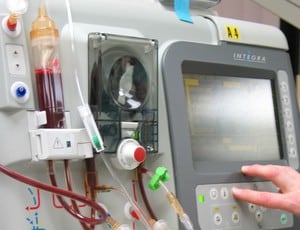
A brief review of the history of hemodialysis in China is presented here, including a brief description of pioneers and their contributions” Bi et al (2019). Abstract: The technique of hemodialysis was introduced into China more than 50 years ago; and both research and use of clinical hemodialysis began in mid-1960s to late-1960s. A brief review […]
Epinephrine autoinjectors – the needle length matters
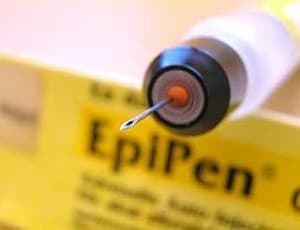
Recently, there has been a concern that the autoinjectors are not designed properly for all patients” Dreborg and Kim (2019). Abstract: Epinephrine autoinjectors should be used for treatment of severe general allergic reactions in the community. Recently, there has been a concern that the autoinjectors are not designed properly for all patients. You may also […]
Terlipressin-related ischaemic necrosis of the skin

We present the case of a patient with extensive skin necrosis, unrelated to the infusion site, in the lower and upper limbs, scrotum and abdomen after the use of terlipressin” Macedo et al 92019). Abstract: Terlipressin is used for the treatment of bleeding oesophageal varices and hepatorenal syndrome in patients with cirrhosis. Adverse effects are […]
Hepatic arterial infusion pump chemotherapy for patients with resected colorectal liver metastases

The objective was to investigate the impact of adjuvant hepatic arterial infusion pump (HAIP) chemotherapy on the rates and patterns of recurrence and survival in patients with resected colorectal liver metastases (CRLM)” Buisman et al (2019). Abstract: BACKGROUND: The objective was to investigate the impact of adjuvant hepatic arterial infusion pump (HAIP) chemotherapy on the […]
Management of peripheral IV catheter guidelines in Germany

Our objective was to describe the practices of PVC handling and assess the implementation of national guidelines for prevention of PVC-related infections in German acute care hospitals, 10 months after their release” Aghdassi et al 92019). Structured summary: Background: Due to their frequent use, peripheral venous catheters (PVCs) are relevant regarding catheter-related infections and their […]
Incidence of peripheral intravenous catheter failure in paediatric patients

Peripheral intravenous catheter failure and complications in paediatrics patients are a significant problem globally” Indarwati et al (2019). Abstract: BACKGROUND: Most paediatric patients have at least one peripheral intravenous catheter insertion during their hospitalisation. Despite the important function of peripheral intravenous catheters for delivery of intravenous therapy, failure and complications rates are widely reported; however […]
Assessing the accuracy of the infusion pump operation

Medication infusion pumps are the most popular device in almost all areas of a hospital; therefore, it is important to frequently inspect the accuracy of the infusion pump operation to prevent underdose/overdose accidents” Kim et al (2019). Abstract: Medication infusion pumps are the most popular device in almost all areas of a hospital; therefore, it […]
Hepatic artery infusion pump for nasopharyngeal carcinoma

To evaluate the benefits and risks of hepatic artery infusion (HAI) gemcitabine and floxuridine (FUDR) in patients with nasopharyngeal carcinoma liver metastases” Peng et al (2019). Abstract: To evaluate the benefits and risks of hepatic artery infusion (HAI) gemcitabine and floxuridine (FUDR) in patients with nasopharyngeal carcinoma liver metastases. HAI catheter systems were implanted under […]
Elimination kinetics of the water volume in infusion fluids

The distribution and elimination kinetics of the water volume in infusion fluids can be studied by volume kinetics” Hahn et al (2019). Abstract: The distribution and elimination kinetics of the water volume in infusion fluids can be studied by volume kinetics. The approach is a modification of drug pharmacokinetics, which uses repeated measurements of blood […]
Hazardous drug residues in the home setting

Careless handling causes toxic HD residues to infiltrate hospital and ambulatory care settings and can even be tracked to patient homes” Huff (2020). Abstract: Safety concerns have existed for more than 40 years about how hazardous drug (HD) exposure contributes to adverse health outcomes in health care workers. Careless handling causes toxic HD residues to […]
Vascular access needs of patients with factitious disorder

When considering a patient with factitious disorder as a candidate for infusion therapy, the clinician must be aware of the challenges associated with providing an invasive treatment to high-risk patients while promoting safety” McMillan (2020). Abstract: Factitious disorder, formerly known as Munchausen syndrome, is a type of mental illness in which patients fabricate symptoms to […]
Long-term subcutaneous hydration therapy for pediatric patients

Long-term subcutaneous hydration has not been described in pediatrics. A case of a 4-year-old born prematurely with subsequent intestinal failure, large vessel thrombi, and repeated central line-associated bloodstream infections prompting catheter removal is discussed” Wheaton et al (2020). Abstract: Long-term subcutaneous hydration has not been described in pediatrics. A case of a 4-year-old born prematurely […]
USP general chapter and Its impact on nursing practice

The Infusion Nurses Society (INS) and the Journal of Infusion Nursing (JIN) editors are pleased to debut Pharmacology Report, a recurring bimonthly column authored by Susan Kleppin, RPh, FASHP” Kleppin (2020). Abstract: The Infusion Nurses Society (INS) and the Journal of Infusion Nursing (JIN) editors are pleased to debut Pharmacology Report, a recurring bimonthly column […]
Impact of crystalloid versus colloid fluids on postoperative nausea

The objective of this systematic review was to determine whether administering colloids to adults undergoing noncardiac surgery significantly reduces PONV incidence and rescue antiemetic use, compared with administering crystalloids” Lee et al (2019). Abstract: STUDY OBJECTIVE: Evidence suggests that administering appropriate volumes of perioperative fluid replacement therapies can decrease the incidence of postoperative nausea and […]
Peripheral venipuncture education strategies for nursing students
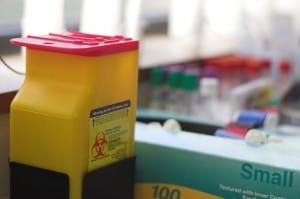
This integrative literature review identified strategies to teach peripheral venipuncture to nursing students” de Souza-Junior et al (2020). Abstract: This integrative literature review identified strategies to teach peripheral venipuncture to nursing students. The following databases were searched for primary studies: Biblioteca Virtual em Saúde (BVS), PubMed, Web of Science, Education Resources Information Center (ERIC), SCOPUS, […]
Best practice for small-volume intermittent IV infusions

Results suggest that intermittent IV infusions should only be delivered as a secondary infusion through a primary infusion administration set with a continuous infusion or an infusion that can flush the administration set at the completion of the secondary infusion” Harding et al (2020). Abstract: This study investigated the delivery of small-volume intermittent intravenous (IV) […]
Hepatic arterial infusion chemotherapy for metastatic breast cancer patients

Hepatic arterial infusion chemotherapy (HAIC) is a treatment option for metastatic breast cancer (MBC) patients with extensive liver metastasis” Furuta et al (2020). Abstract: BACKGROUND/AIM: Hepatic arterial infusion chemotherapy (HAIC) is a treatment option for metastatic breast cancer (MBC) patients with extensive liver metastasis (LM); however, the appropriate regimen and the treatment effects have not […]
Changeover from a syringe pump to an infusion pump

This study compared the operator workloads associated with the Anyfusion® pump and with the conventional method using two infusion devices (a syringe pump and an infusion pump)” Min et al (2019). Abstract: BACKGROUND: A changeover from a syringe pump to an infusion pump may transiently interrupt drug administration and result in medication errors. A newly […]
Review of fluid volumes infused during burn resuscitation

‘Fluid creep’ or excessive fluid delivered to burn patients during early resuscitation has been suggested by several studies from individual burn centers” Shah et al (2019). Abstract: INTRODUCTION: ‘Fluid creep’ or excessive fluid delivered to burn patients during early resuscitation has been suggested by several studies from individual burn centers. METHODS: We performed a Medline […]
Midline IV catheters in critically ill emergency department patients

We conducted a prospective observational case series of all patients who had a midline catheter insertion attempted in the ED” Spiegel et al (2019). Abstract: STUDY OBJECTIVE: Midline catheters are an alternative to more invasive types of vascular access in patients in whom obtaining peripheral access has proven difficult. Little is known of the safety […]
Education and devices to prevent blood and body fluid exposures
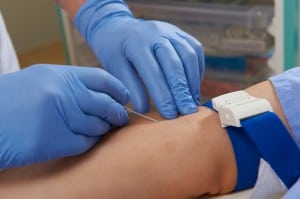
Despite recent technological advances such as safety-engineered devices (SEDs), these injuries continue to occur in healthcare facilities worldwide” Cheetham et al (2019). Abstract: BACKGROUND: Healthcare workers are at risk of blood and body fluid exposures (BBFE) while delivering care to patients. Despite recent technological advances such as safety-engineered devices (SEDs), these injuries continue to occur […]
Propionibacterium acnes osteomyelitis after intraosseous cannulation

We report here an extremely rare incident of P. acnes tibial osteomyelitis at the IO access site” Cole et al (2019). Abstract: Propionibacterium acnes osteomyelitis secondary to intraosseous (IO) cannulation is not well documented in literature. We report here an extremely rare incident of P. acnes tibial osteomyelitis at the IO access site, in a […]
How to reduce pain during venipuncture in premature infants
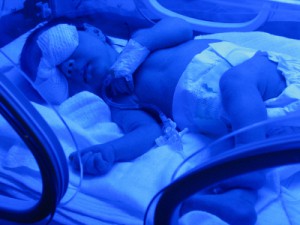
To evaluate the efficacy of the reduction of visual and auditory stimuli on pain during venipuncture in premature newborns of 32-36 weeks of gestation” Bonjorn Juarez et al (2019). Abstract: AIM: To evaluate the efficacy of the reduction of visual and auditory stimuli on pain during venipuncture in premature newborns of 32-36 weeks of gestation. […]
Central venous access device removal in children

To assess the utility of routine preprocedural bloodwork during elective removal of central venous access devices (CVADs) with respect to bleeding complications” Donnellan et al 92019). Abstract: PURPOSE: To assess the utility of routine preprocedural bloodwork during elective removal of central venous access devices (CVADs) with respect to bleeding complications. MATERIALS AND METHODS: Patients who […]
Accessing medical care following needlestick injury

First responders have an increased risk of occupational exposure to HIV as the result of a needlestick injury (NSI) because of the chaotic prehospital environment in which they provide care” Carter et al (2019). Abstract: First responders have an increased risk of occupational exposure to HIV as the result of a needlestick injury (NSI) because […]

